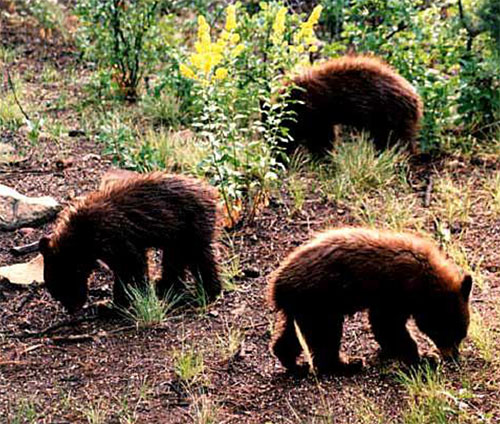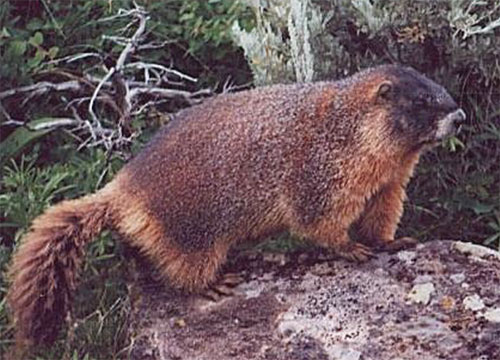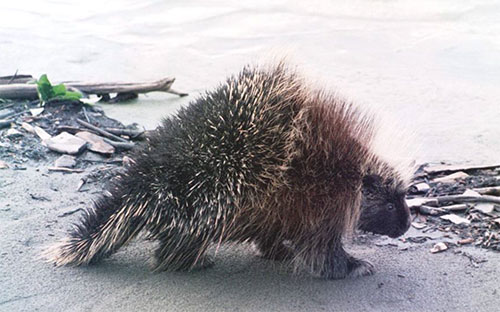What is a wolverine?

Wolverines are the largest member of the weasel family and are some of the rarest mammals in North America. They resemble a small bear with a long tail. They have a stocky, muscular body about the size of a medium-sized dog. Their color varies from dark brown or black with a blond stripe on their forehead and sides to nearly all blond. Adults weigh 35-40 lbs. and are about 25-34 inches long, with tails 7-10 inches long. Wolverines live in the high mountain forests and tundra of the Rocky Mountains and seek shelter from weather and predators among boulders and in rock crevices. They have a keen sense of smell that helps them locate food. They generally feed on rodents, fish, reptiles, birds, and carrion. However, they will sometimes take larger animals that have been weakened by age, illness or trapped in snow. Wolverines are not habitat specific and wander widely in all seasons, though they are often found where deer, elk or moose spend their winters. Their home territories are 200 square miles or more.
Several Colorado mammals, including badgers, marmots and bears, live in similar habitats and can be confused with wolverines, especially when viewed from a distance.
The Following Animals are Commonly Mistaken for Wolverines
|
Badger |
Badgers are members of the weasel family like wolverines, but are smaller and much more common. They have a flattened body, short legs and shaggy fur. Badgers are approximately 18-23 inches in length, have a 4½ -6 inch tail and weigh about 18 lbs. Their color varies from silver-gray to yellowish-brown on their backs. They have a white belly and a black facial pattern, with a white stripe down their nose. They do not have the distinctive blond stripe along their sides a wolverine will have. Badgers live in dry, treeless areas and are remarkable burrowers that can rapidly dig out of sight when danger threatens. |
|
Bear |
 Bears (especially cubs) and wolverines look somewhat similar and both can be found in the high mountain forests of Colorado. Bears are larger, with a 2-3 foot shoulder height, and have short tails. Adult bears weigh 120-300 lbs. They have a brown snout, but their fur varies in color from black, brown, red to blond. Wolverines can also be light in color, but the longer tail and blond stripe along their sides distinguishes them from bears. |
|
Marmot |
 |
| Porcupine |
 Porcupines, like wolverines, can be dark brown or black in color with white highlights around the body and tail. Porcupines range in size from 12-35 lbs. and have round, 2-3 foot long bodies, short legs, and a stout, 8-10 inch tail. They have a slow, waddling gait. They are generally found near forests, but can be observed in open, rocky tundra up to 12,000 feet in elevation where wolverines may be observed. While porcupines are distinguished by their quills, those are normally flattened against the body unless the animal is agitated. Wolverines are fast-moving animals, so sightings generally tend to be very brief. Porcupines are slow-moving animals, so sightings are usually more extended. |

